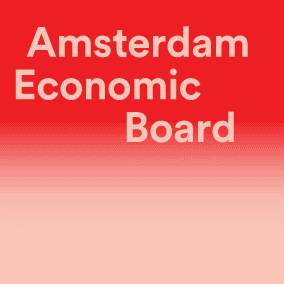Amsterdam Economic Board
Impacting the Amsterdam region
The Amsterdam Economic Board is the leading public-private network of businesses, government bodies, knowledge institutions and civil society organisations. We are working towards a future-proof economy with sustainable earning power, resilience and broad prosperity.
Building a strong, healthy and green future for the Amsterdam metropolitan area
Together with our board members, including Young on Board, and our partners, the Amsterdam Economic Board is securing a major impact on the Amsterdam Metropolitan Area. Building an economically strong, healthy, innovative and green region. We are building the future for this region and for the Netherlands.
Independent and influential
The Amsterdam Economic Board is completely independent. We are not an extension of the government or business. We help our partners achieve goals that go beyond their individual interests. Contributing to sustainable earning power resilience and broad prosperity in the Amsterdam Metropolitan Area.
Together, we have a major impact on the Amsterdam region and, by extension, on the Netherlands and Europe.
Would your organisation like to contribute to this as well? Partner with us to help build a a healthy, innovative and green region.
